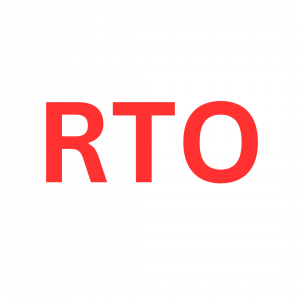What is FASTag?
FASTag is a kind of RFID passive tag which is used for making all toll payments directly from the customers linked prepaid or savings/ current account. It is fixed or pasted on the windscreen of the vehicle and enables the customer to drive through toll plazas, without any hassle or stopping for any toll payments. The toll fare payments get deducted automatically from the linked account of the customer. FASTag is also vehicle specific and once it is affixed to a vehicle, it cannot be transferred to another vehicle.
Purchasing and Usage of FASTag :
FASTag can be purchased from any of the NETC Member Banks. If a FASTag is linked to the prepaid account, then it needs to be recharged/ topped-up as per the usage of the customer. If adequate balance is not maintained by the customer, the FASTag gets blacklisted at the toll plaza. In such a scenario if the customer travels through a toll plaza without recharging then he won’t be able to avail the NETC services and would be required to pay the toll fare through cash.
Introduction of Satellite-based Toll System
The new highway tolling system will use the Global Navigation Satellite System (GNSS) for accurate location tracing. The new satellite based toll system will replace the existing toll collection system in India.
GNSS refers to any satellite based navigation system, including the US’ Global Positioning System (GPS) and India’s GPS Aided GEO Augmented Navigation (GAGAN). The GPS-based toll system will charge vehicles for the distance they have covered on highways. The vehicles will be fitted with an on-board unit (OBU) or tracking device, which will help determine the location. The coordinates of the national highways will be logged in using digital image processing, and software will calculate toll rates based on the distance traveled. Additionally highways will have gantries with CCTV cameras mounted for enforcement purposes.
The amount will be deducted from a digital wallet linked to the OBU. Currently, FASTags are used to facilitate payment at toll plazas using the Radio Frequency Identification (RFID) technology.
Introduction of Satellite-based Toll System
The proposed highway tolling system utilizes the GNSS, including the Indian satellite navigation system GAGAN (GPS Aided GEO Augmented Navigation) for accurate location tracking.
How GNSS Works
The GNSS is a term used to refer to any satellite-based navigation system, including the US’ Global Positioning System (GPS). It uses a large constellation of satellites to provide more accurate location and navigation information to users globally as compared to the GPS alone.
Implementation involves fitting vehicles with an On-Board Unit (OBU), or tracking device, which communicates with satellites to determine location.
Coordinates of national highways are logged using digital image processing, allowing software to calculate toll rates based on distance traveled.
Toll amounts are deducted from a digital wallet linked to the OBU, ensuring seamless and cashless transactions.
Enforcement measures including gantries equipped with CCTV cameras along highways to monitor compliance and deter evasion tactics.
The new system will likely coexist with the existing FASTag based toll collection initially. A decision on mandating OBUs for all vehicles is yet to be made.
Payment and Enforcemen
Payments will be deducted from a digital wallet linked to the OBU, streamlining the toll payment process. The government has initiated pilot projects on selected sections of National Highways to test the efficacy of this GNSS-based electronic toll collection (ETC) system.
Benefits of Satellite-based Tolling:
- Smoother Traffic Flow: Elimination of toll plazas is expected to significantly reduce traffic congestion, especially during peak hours.
- Faster Commutes: Frictionless toll collection should lead to quicker travel times and a more efficient highway network.
- Fairer Billing: The System aims to offer users the benefit of paying tolls only for the actual distance traveled, promoting a pay as you use model.
Challenges Faced
- Payment Recovery: Recovering tolls from users with depleted digital wallets or those who tamper with the system remains a concern.
- Enforcement Commutes: Frictionless toll collection should lead to quicker travel times and a more efficient highway network.
- Privacy Concerns : Data security and user privacy need to be addressed effectively.
GAGAN and its Role
The Indian government launched the GAGAN GPS Aided GEO Augmented Navigation program to provide satellite-based navigation services across the country. By using reference signals, it seeks to improve the accuracy of global navigation satellite system (GNSS) receivers. In order to create the GAGAN, a regional Satellite Based Augmentation System (SBAS), the Airports Authority of India (AAI) and the Indian Space Research Organization (ISRO) worked together.
The purpose of GAGAN is to create a navigation system that may be used for safety-to-life civil operations and to help aircraft land accurately over Indian airspace and the surrounding area. GAGAN can communicate with other global SBAS systems.
FAQS:
Q1. What is GNSS, and how does it differ from GPS?
A1. GNSS stands for Global Navigation Satellite System, which encompasses all satellite-based navigation systems like GPS (Global Positioning System). While GPS is a specific system developed by the United States, GNSS is a broader term that includes GPS and other similar systems developed by different countries.
Q2. How does the proposed highway tolling system work?
A2. The proposed system utilizes GNSS technology to accurately track the location of vehicles on highways. Vehicles are fitted with an On-Board Unit (OBU) or tracking device, which communicates with satellites to determine the vehicle’s position. Toll rates are then calculated based on the distance traveled by the vehicle.
Q3. What are the benefits of the satellite-based toll collection system?
A3. Some benefits include smoother traffic flow due to the elimination of toll plazas, faster commutes resulting from frictionless toll collection, and fairer billing where users pay tolls only for the actual distance traveled.
Q4. What are some challenges associated with this new toll collection system?
A4. Challenges include concerns about recovering tolls from users with depleted digital wallets or those who tamper with the system, enforcement issues, and privacy concerns regarding data security and user privacy.
Q5. How will payments be deducted from vehicles using this system?
A5. Payments will be deducted from a digital wallet linked to the On-Board Unit (OBU) installed in the vehicle. This ensures seamless and cashless transactions for toll payments.
Q6. Is the proposed system currently being tested?
A6. Yes, the government has initiated pilot projects on selected sections of National Highways to test the efficacy of this GNSS-based electronic toll collection (ETC) system.
Q7. Will the new toll collection system completely replace the existing FASTag system?
A7. Initially, the new system is expected to coexist with the existing FASTag-based toll collection system. A decision on mandating On-Board Units (OBUs) for all vehicles is yet to be made.
Q8. How will enforcement be ensured with this new system?
A8. Enforcement measures include gantries equipped with CCTV cameras along highways to monitor compliance and deter evasion tactics.
Q9. What is GAGAN, and how does it relate to this toll collection system?
A9. GAGAN stands for GPS Aided GEO Augmented Navigation, an Indian satellite navigation program aimed at providing accurate navigation services. It is one of the GNSS systems used in the proposed toll collection system for location tracking.
Q10. Is there a timeline for the nationwide implementation of this new toll collection system?
A10. As of now, there isn’t a specific timeline for nationwide implementation. The government is likely to roll out the system gradually after successful pilot testing and addressing any issues that may arise during testing.











